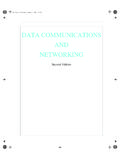Transcription of Multiple Choice Questions, COPA - Semester-1
1 Multiple Choice Questions, COPA - Semester-1 . December 27, 2017. ii Prepared by: Contents 1 Semester 1 1. Basic hardware and software .. 1. History of computers .. 1. Types of computer .. 3. Advantages of computers .. 4. Application of computers .. 5. Concept of hardware and software .. 5. Computer hardware .. 5. Output devices .. 8. Central Processing Unit (CPU) .. 10. Computer software .. 16. Computer Administration .. 24. Booting error signals .. 25. BIOS settings .. 25. Installation of windows operating system.
2 26. Common computer problems and solutions .. 26. MS DOS and Linux .. 28. MS DOS .. 28. Internal DOS commands .. 28. External DOS Commands .. 30. Output redirection in MS DOS .. 32. Wild cards in MS DOS .. 32. Open Source Software (OSS) .. 32. Linux shell commands .. 33. Special characters in Linux .. 37. MS Word .. 39. Introduction to various application in MS Office .. 39. Features of MS Word .. 39. Office button in MS Word .. 40. Menus and toolbars in MS Word .. 40. Creating & saving a document in MS Word.
3 49. Inserting objects in MS Word .. 51. Inserting Macros in MS Word .. 51. Creating mail merge in MS Word .. 52. Creating templates in MS Word .. 53. Page setup & printing in MS Word .. 53. MS Excel .. 56. Data types in MS Excel .. 56. Cell referencing .. 57. Categories of functions in MS Excel .. 57. Sorting in MS Excel .. 64. Filtering in MS Excel .. 65. iii iv Prepared by: Validation in MS Excel .. 65. Charting in MS Excel .. 65. Data tables in MS Excel .. 66. Pivot table .. 66. Goal seek in MS Excel.
4 67. Scenarios in MS Excel .. 67. Powerpoint .. 69. Introduction to PowerPoint .. 69. Advantages of Powerpoint .. 69. Creating Slide Shows .. 69. Fine tuning the presentation .. 70. Good presentation techniques .. 71. OpenOffice .. 73. Introduction to Open Office .. 73. Image properties .. 73. Image types .. 74. Editing of images .. 75. Database Management Systems .. 77. Data, Information and Database .. 77. Overview of popular databases systems .. 77. Rules for designing good tables .. 80. Integrity rules and constraints in a table.
5 81. Relationships in tables .. 81. Introduction to various types of Queries and their uses .. 82. Designing Access Reports and Forms .. 83. Macros in MS Access .. 85. Networking .. 86. Computer Networks, Necessity and Advantages .. 86. Client Server and peer to Peer networking concepts .. 86. Concept of Proxy Server and proxy firewall server .. 87. Network topologies .. 87. Network components .. 88. Network Cables .. 89. Wireless networks .. 89. Bluetooth technology .. 90. OSI 7 Layer Model .. 90.
6 Various Network protocols .. 91. Logical and Physical Addresses .. 94. Classes of Networks .. 94. Network Security & Firewall .. 94. DHCP Server .. 95. Internet .. 95. Introduction to the Internet .. 95. Introduction to WWW .. 96. Web Browsers .. 96. Internet servers .. 97. Search engines .. 97. Domain naming Systems .. 97. E-mail .. 98. Video chatting tools .. 99. VOIP .. 100. Social Media .. 100. CONTENTS v Cloud storage .. 100. Internet Security .. 101. Web Design .. 104. Web server .. 104. Static and Dynamic Web pages.
7 104. Introduction to HTML .. 105. Various tags in HTML .. 105. Creating Forms with controls using HTML .. 109. Concepts of CSS .. 111. Applying CSS to HTML .. 112. Open source CMS .. 112. Web authoring tools .. 113. Prepared by: vi Prepared by: chapter 1. Semester 1. Basic hardware and soft- (a) punched card (b) DVD. (c) hard disk (d) floppy disk ware 8. Difference engine provided its output History of computers through . (a) printer 1. Logarithm was invented by . (b) curve plotter (a) John Napier (c) card punching machine/ bell (b) Edmund Gunter (d) all of them (c) Blaise Pascal 9.
8 The computer which worked on contin- (d) Charles Babbage uously changing quantities (like electric- 2. Mechanical calculator was invented by ity, water flow, etc.) for input were . called . (a) John Napier (a) ENIAC. (b) Edmund Gunter (b) logarithm (c) Blaise Pascal (c) analog computer (d) Charles Babbage (d) mainframe computer 3. Slide rule was invented by . 10. Analog computer was invented by (a) John Napier . (a) John Napier (b) Edmund Gunter (b) Sir William Thomson (c) Blaise Pascal (c) Blaise Pascal (d) Charles Babbage (d) Charles Babbage 4.
9 First general purpose computer was in- 11. Computers like Colossus, were used for vented by . (a) John Napier German military communica- (b) Edmund Gunter tion during World War II. (a) decrypting (b) scrambling (c) Blaise Pascal (c) randomizing (d) encrypting (d) Charles Babbage 12. Theoretical definition of a general 5. The first computer was invented by purpose computer was provided by Charles Babbage was called . (a) slide rule . (a) Allen Turing (b) difference engine (b) John Napier (c) ENIAC (c) Blaise Pascal (d) calculator (d) Edmund Gunter 6.
10 Is called father of modern 13. The first general purpose computer, computers. which fulfilled Turing's definition of a (a) John Napier general purpose computing machine was (b) Edmund Gunter . (c) Blaise Pascal (a) slide rule (b) ENIAC. (d) Charles Babbage (c) logarithm (d) Colossus 7. Difference engine used for in- 14. The first generation computer was called put.. 1. 2 Prepared by: (a) slide rule (b) ENIAC 23. Second generation computer was cre- (c) logarithm (d) Colossus ated in the year . (a) 1945 (b) 1959.
